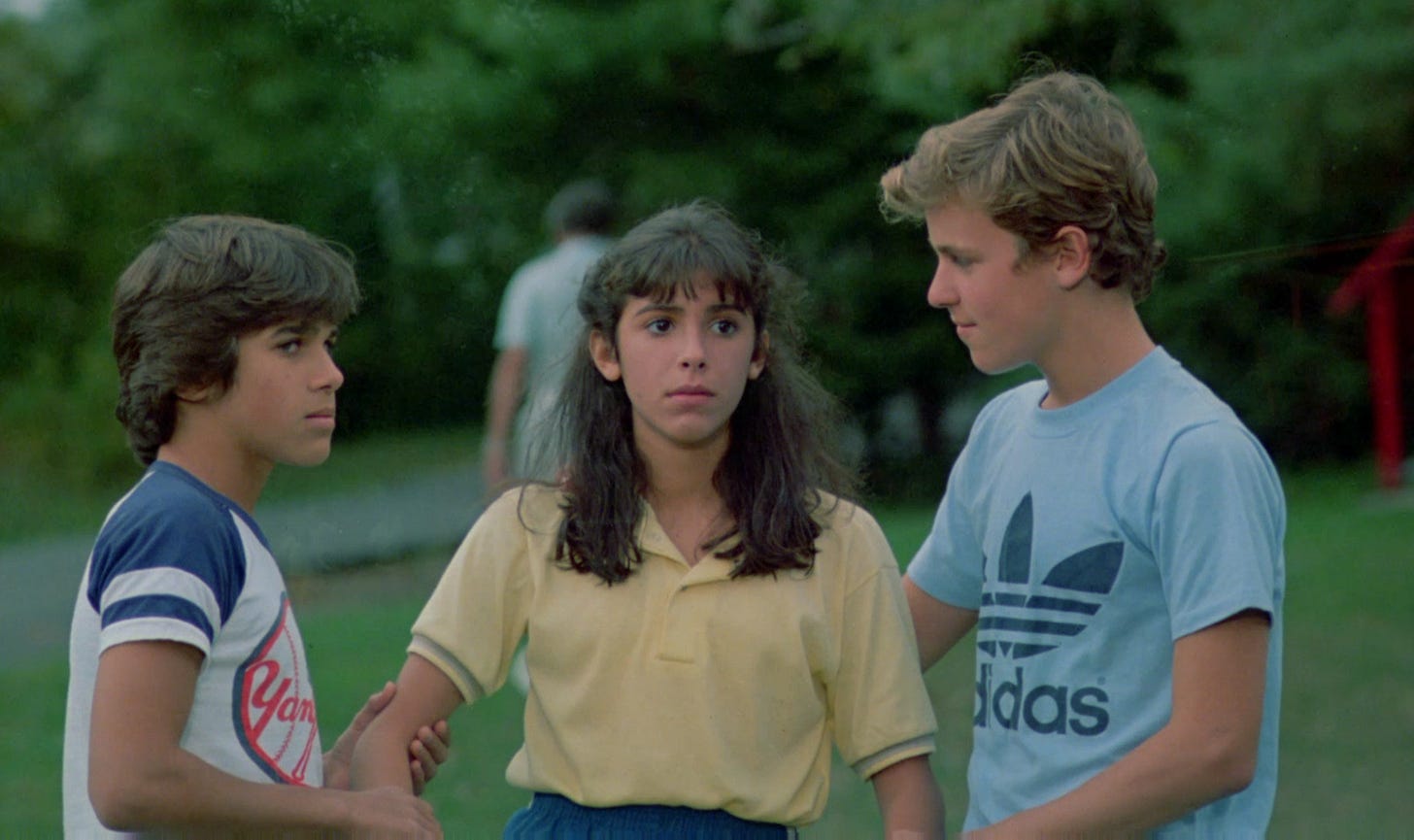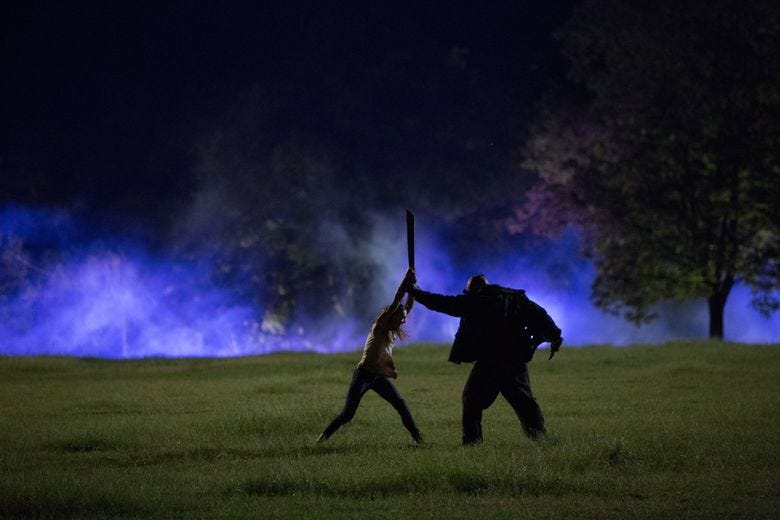June 20th marked the first day of summer. Kids are out of school, mosquitos swarm our yards, and the beaches becomes our new relaxing destination—it’s long days full of sun and iced tea, with sunscreen on our bodies and hats on our heads. With summer usually comes vacations to theme parks and island getaways, but also the infamous summer camp.
The old camps that are meant to build communities for children through outdoor activities, though usually end in kids being homesick after three days. There are all types of summer camps: your art camps, your music camps, your church camps… but none of these subgenres of summer camps stand a chance against the horrors of the classic slasher film.
Summer camp horror is a staple of the slasher genre. Not only does a secluded camp in the woods act as the perfect setting for a film, but it also gives our killers more leverage.
Friday the 13th
Let’s face it: Friday the 13th is the staple of summer camp horror.
There’s no denying the impact this franchise has had not only on the slasher genre, but horror as a whole. Jason Voorhees has become as synonymous with horror as Michael Jackson is with pop music.
Camp Crystal Lake is the summer camp, often parodied in film because of its wide recognition among audiences. It wasn’t always like this though—before 1980 and the release of Friday the 13th, the camp just known as Camp No-Be-Bo-Sco down in New Jersey.
But Friday the 13th didn’t just popularize the slasher or summer camps. It weaponized the idea of nostalgia.
Summer camps are often seen as places of youthful bonding, bonfires, and s’mores… not necessarily bloodshed. In Friday the 13th, the camp is used as a murderous playground rather than one for childhood development.
After all, if Jason Voorhees wasn’t in the original film, then what actually made it stick?
The first film of these franchise focused more on the isolation aspect rather than the killer. While, yes, a killer running around the camp is a vital part of the story, it’s the overall setting that makes it ten times scarier.
Camp horror traps its characters in the middle of the woods away from civilization. The teenager counselors aren’t just dealing with being alone. They’re dealing with their phones being cut off, their cars stalling, and no way to leave the danger zone.
Friday the 13th didn’t just make summer camp horror popular… it turned a legend into a legacy.
Sleepaway Camp
Friday the 13th may be the mother of all summer camp horror, but Sleepaway Camp acts as the franchise’s confused daughter, hiding in a cabin and carrying a heavier burden. Released only three years after Friday the 13th, Sleepaway Camp injected the slasher formula with something that felt real: identity, repression, and taboo.
While Sleepaway Camp follows the same plotline of a killer in the classic camp setting, it also focuses on more realistic horrors of summer camp. The film includes bullying, inappropriate adults, and a neverending sense of dread.
There’s a clear difference here vs. what Friday the 13th is trying to do: one is focusing on the supernatural horror, the other is leaning into real-world fear.
The main character of Sleepaway Camp is Angela. She’s bullied because of her awkward and timid nature. There’s not really a reason for her to be relentlessly bullied, other than her not fitting in to the standards of… what? Being loud and obnoxious?
What makes Sleepaway Camp stand out from Friday the 13th is its psychological discomfort. While, yes, some of the kills are bonkers, the film is more so about repression when approaching it in the lens of modern day.
On the surface, this movie seems like a typical summer camp slasher: rowdy teens, shady counselors, and a concerning string of deaths. But the more you dig, you see that this story is actually about the isolation in having a “different” identity than those around you.
Angela’s awkward nature isn’t just a personality trait—it’s a survival tactic. It’s a way for her the shrink away from the scrutiny and protect herself from the world. By the end of the film, it’s “revealed” that Angela is transgender. With that perspective, the way she handled herself throughout the film becomes more clear: she felt outcasted, confused, and unsure of how to navigate.
In some ways, it mirrors what many LGBTQ+ youth have to deal with when forced to go to summer camp: not a carefree escape, but rather a place of hiding.
Angela’s transgender identity has sparked debate over representation and intent amongst activists, but the overall message of LGBTQ+ children feeling outcasted in spaces like summer camps is still relevant. Certainly, parts of the movie haven’t aged well, but it still captures that eerie and quiet ache of when you feel like you don’t belong.
It reminds us that horror isn’t always about the monster lurking the lake… but sometimes about the fear of being seen.
The Final Girls
The Final Girls acts as a love letter to the camp slasher genre, playing into all the tropes we all have grown accustomed to.
When a girl gets stuck in a cheesy 80s horror movie that her late mother starred in, she is forced to play the role of a survivor while navigating the archetypes of the slasher film.
There’s cabins, a lake, and a stalking killer. It’s the perfect setting wrapped in a bow. But our main character, Max, uses the cliches in the film to explore her grief.
The camp becomes a liminal space between past and present, where she freely let go of her sorrow. While she can never move on from her mother’s death, she can at least learn how to heal.
The Final Girls, through all the laughter and gore, is a story about transformation. It touches on the aspect of how summer camp can change a person, allowing space for healing and expression.
Summer camp horror isn’t just about characters getting hacked up, it’s also about the resurrection of pieces of ourselves we thought we forgot.
Summer camp horror is here to stay. Even recently, we were hit with Hell of a Summer, the newest addition to the camp slasher lineup. It acts as a Gen Z revival, with characters reflecting modern attitudes and issues while surviving a killer at the lake.
After all, summer always returns even hotter than the year before. And bloodier, I guess.













Excellent and thoughtful article on the summer camp slasher genre. "The Burning" from 1981, with a pre-"Seinfeld" Jason Alexander is also an interesting watch.